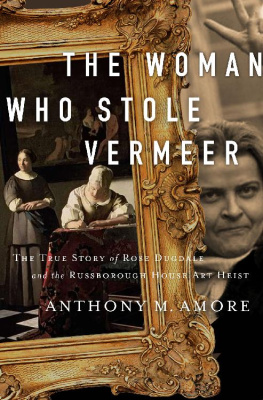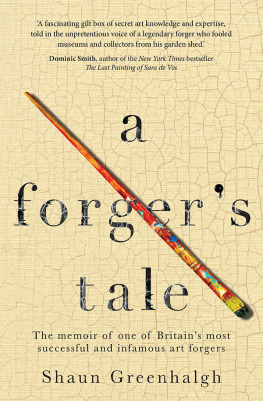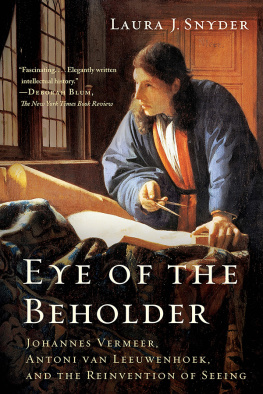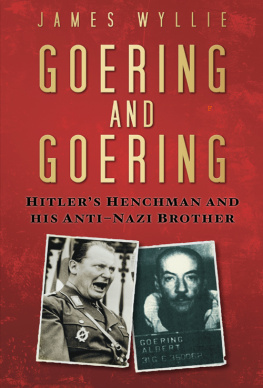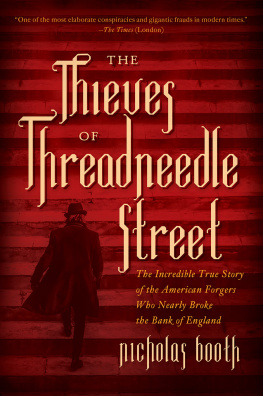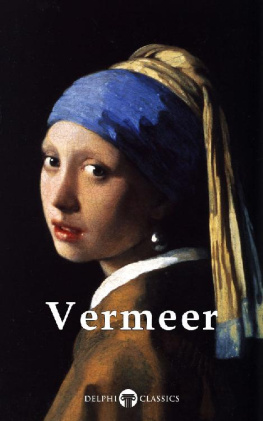A True Story of Vermeer, Nazis, and the Greatest Art Hoax of the Twentieth Century
It is in the ability to deceive oneself that the greatest talent is shown.
We have here aI am inclined to say the masterpiece of Johannes Vermeer.
T his is the true story of a colossal hoax. The con man was the most successful art forger of the twentieth century, his most prominent victim the second most powerful man in Nazi Germany. The time was World War II. The place, occupied Holland.
Everything about the case was larger than life. The sums that changed hands soared into the millions; the artist who inspired that frenzy of buying was one of the best-loved painters who ever lived, Johannes Vermeer; the collectors vying for masterpieces included both Adolf Hitler and Hermann Goering.
But the outsize scale and the extravagant color were only the beginning. The story differs in key ways from most true tales of crime. Usually we are presented with a crime, and we set out to find the criminal. Here, no one even knew that a crime had been committed.
Where there was no crime, it stood to reason there was no criminal. For a villain who craved recognition, that made for a vicious dilemma. Keep his crime secret, and he would live rich and safe but unknown. Confess what he had done, on the other hand, and though he would find himself condemned to a prison cell, his genius would be proclaimed worldwide.
A second, even stranger feature made this case of art fraud different from any other. What made the fraud succeed was the very thing that should instantly have revealed it.
In this mystery, then, the usual questions do not apply. For us, the central question is not whodunit but, instead, howdunit?
Amsterdam
May 1945
U ntil almost the very end, Han van Meegeren thought he had committed the perfect crime. He had pocketed more than $3 millionthe equivalent of about $30 million todayand scarcely a trace of scandal clung to his name. Why should it, when his dupes never even knew that someone had played them for fools and taken them for a fortune?
Even now, with two uniformed strangers at his door saying something about an investigation, he thought he might get away with it. The two men seemed polite, not belligerent. No doubt they had been impressed by the grandeur of 321 Keizersgracht. Maybe they really did have only a few routine questions to sort out. Van Meegeren decided to keep his secrets to himself.
Van Meegeren was a small, dapper man of fifty-five with a tidy mustache and gray hair swept back from his forehead. His house was one of the most luxurious in Amsterdam, on one of the citys poshest streets, a neighborhood of bankers and merchant kings. Imposing but not showy, in keeping with the Dutch style, the house rose four stories high and looked out on a postcard canal. Most impressive of all in space-starved Amsterdam, where every staircase rises as steeply as a ladder, the house was nearly as wide as it was tall. The front hall was tiled in marble, and envious rumors had itfalselythat the hall was so big that guests at Van Meegerens parties raced their bicycles around it. On the other hand, the rumors about indoor skating were true. Van Meegeren had found a way to convert his basement to an ice rink so that jaded partygoers could skate in style.
Joop Piller, the lead investigator on this spring day, would not have been a guest at those parties. A Jew in Hollandand Holland lost a greater proportion of Jews in World War II than any other Western European nationPiller had fought in the Dutch resistance from 1940 to 1945. In years to come, many would embellish their war time credentials, but Piller was the real thing. His last mission had been to set up a network to rescue Allied pilots after the Battle of Arnhem and smuggle them to safety.
Piller had only begun to learn about Van Meegeren. Holland in 1945 was short of everything but rumors, and Piller had picked up some of the gossip swirling around Amsterdam. Van Meegeren had friends in all the worstwhich was to say, pro-Germancircles; he was a painter and an art collector; he was a connoisseur of old masters and young women; he had lived in France and had won that countrys national lottery.
Skeptical by nature, Piller was inclined to wave all the talk aside. Still, it was easy to see why the rumors flew. What kind of artist lived like this? Rembrandt, perhaps, but Van Meegeren was no Rembrandt. He was, according to all that Piller had heard, a middling painter of old-fashioned taste and no special distinction. He was apparently an art dealer as well, but he seemed to have made no more of a splash as a dealer than as a painter. He supposedly had a taste for hookers and high living and a reputation as a host who never let a glass stay unfilled. Other tales hinted at a kind of self-indulgent posturing. He had brought his guitar to a friends funeral because it might get boring.
The bare facts of the artists biography, as Piller would begin to assemble them over the next few days, only deepened the mystery. Van Meegeren was a Dutchman born in the provincial town of Deventer. He had studied art and architecture in Delft, the hometown of the great Johannes Vermeer. He had won prizes for his art, but he was as out of tune with the current age as his favorite teacher, who had taught Van Meegeren to prepare his own paints like his predecessors of three centuries before.
Despite the occasional triumph, Van Meegeren hardly seemed marked for greatness. In college he got his girlfriend pregnant, married her at twenty-two, and settled down uneasily near Delft. There he tried, without much success, to support his family with his art.
Van Meegeren spent the 1920s in The Hague, where life improved. He gained a reputation as a playboy and a portrait painter whose skill was perfectly adequate but whose client list was positively dazzling. In 1932 (by this time, with a new wife), he left Holland for the French Riviera. In the small town of Roquebrune, he moved into a spacious and isolated villa perched high on a cliff above the sun-dappled Mediterranean. As the Great Depression strengthened its grip, Van Meegeren somehow continued to thrive. In 1937, after five years in Roquebrune, he moved to even more imposing quarters, purchasing a mansion with a dozen bedrooms and a vineyard in Nice.
But at his first meeting with the little man in the big house, Piller knew only that Van Meegerens name had turned up in the paperwork of a dodgy art dealer. And so, when Piller took out his notebook and posed the question that would set the whole complicated story in motion, he had suspicions but not much more. Tell me, Mr. Van Meegeren, he asked, how did you come to be involved in selling a Vermeer?



